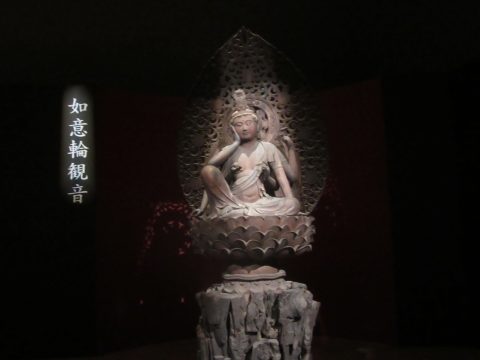
From Tuesday, October 2, 2018 to Sunday, December 9, 2018, the Tokyo National Museum holds a The Buddhist Sculptures of Daiho’onji, Kyoto: Masterpieces by Kaikei and Jokei . Since the exhibition was held on October 1st, I will tell you the situation.
During the Kamakura period, the ancient temple of Shingon Buddhist school called Daiho’onji,, which was requested by Giku Shonin in 1220. As there is Senbon Street crossing Kyoto to the north and south, it is familiar to the name of "Senbon Shakado" and has gathered a wide range of faiths from aristocrats to common people as the center of Buddha faith.
It is designated as a national treasure and its main hall, which has escaped numerous warfare including Onin’s turbulence, and also known as having a married couple and hypocrites such as husband and wife as birthplace of "Okame".
The principal image is the Seated Shaka Nyorai (Sakyamuni Buddha) created by the Gyokai that is one of the pupil of Kaikei. And, it is the ten great disciple statues, which is the work of the last years of Kaikei , who stands in that Buddha's Buddha Seated. In this exhibition, a lot of masterpieces of 'Kei party' transmitted to Daiho’onji are gatherd.
Exhibition landscape
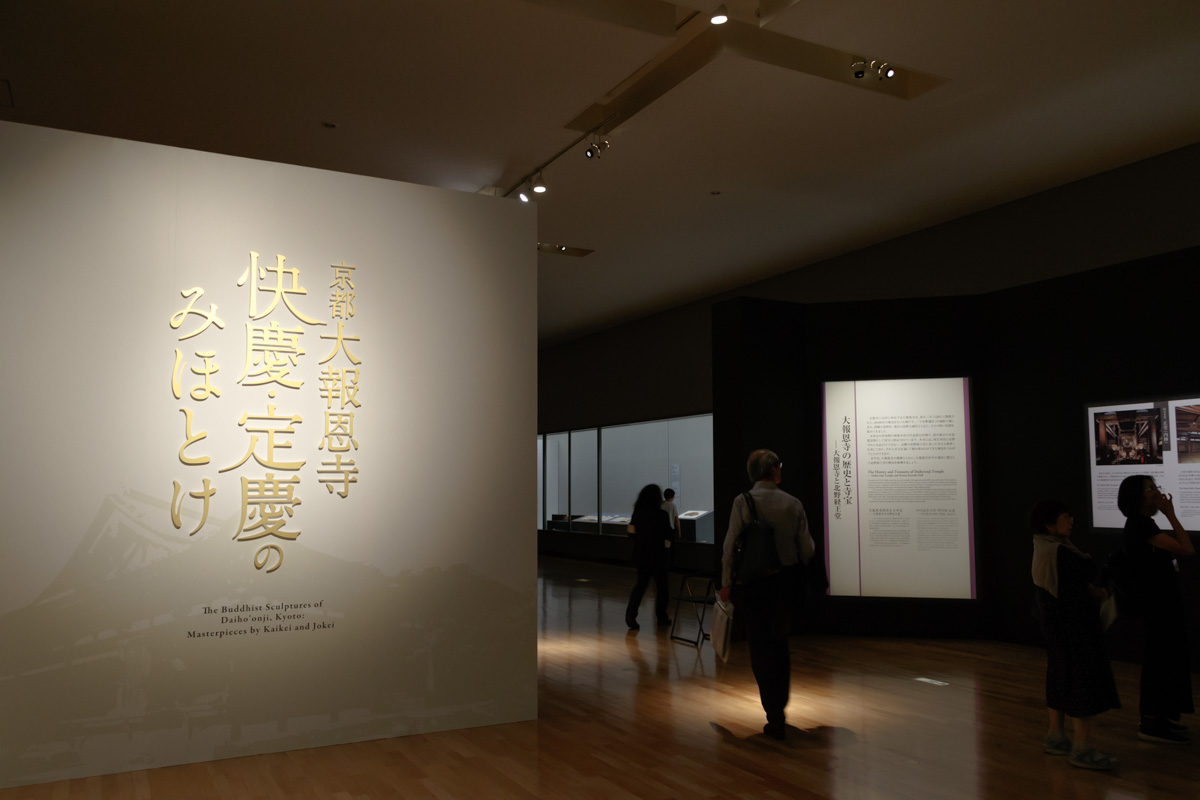
The exhibition is held at the Tokyo National Museum Heiseikan Special 3-4 rooms. A special exhibition "Marcel · Duchamp and Japanese art" (10/2 ~ 12/9) is held in the 1st and 2nd room of the same building, and the fact that two exhibitions are performed adjacently at the same time . Unlike Dushan's exhibition hall where contemporary art works line up, this place is filled with a serene atmosphere where Buddha statue releases, and its contrast is also interesting.
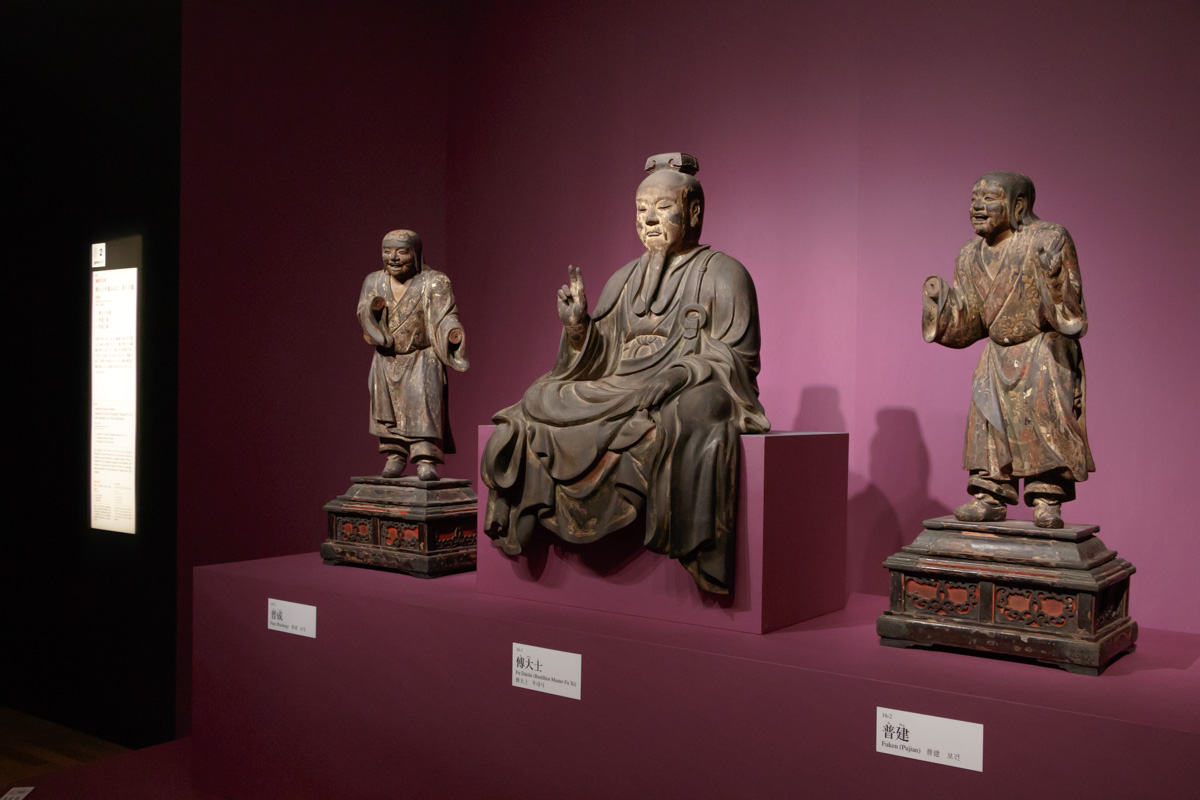

The Buddhist Sculptures of Daiho’onji, Kyoto: Masterpieces by Kaikei and Jokei is composed of three parts,in the first part; The History and Treasures of Daiho’onji —Daiho’onji Temple and Kitano Kyo’odo Hall , the main temple designated as a national treasure as the oldest wooden building in Kyoto (Kyoto city) and its history are introduced.
Kitano Kyo’odo Hall is a Buddhist temple built by Ashikaga Yoshimitsu near Daiho’onji, then was the largest monument in Kyoto City. In the wooden temple it was quite lively such as the Kitano Manbukyokai, led by successive generals Muromachi was done, but the cultural properties and sutra etc. which had been dismantled under the influence of the separation of God and Buddha, It was transferred.
In the first chapter, items of Kitano Kyo’odo Hall, including the Buddha statue of the Heian period, are displayed, and the appearance of the past day is notified as it is now.
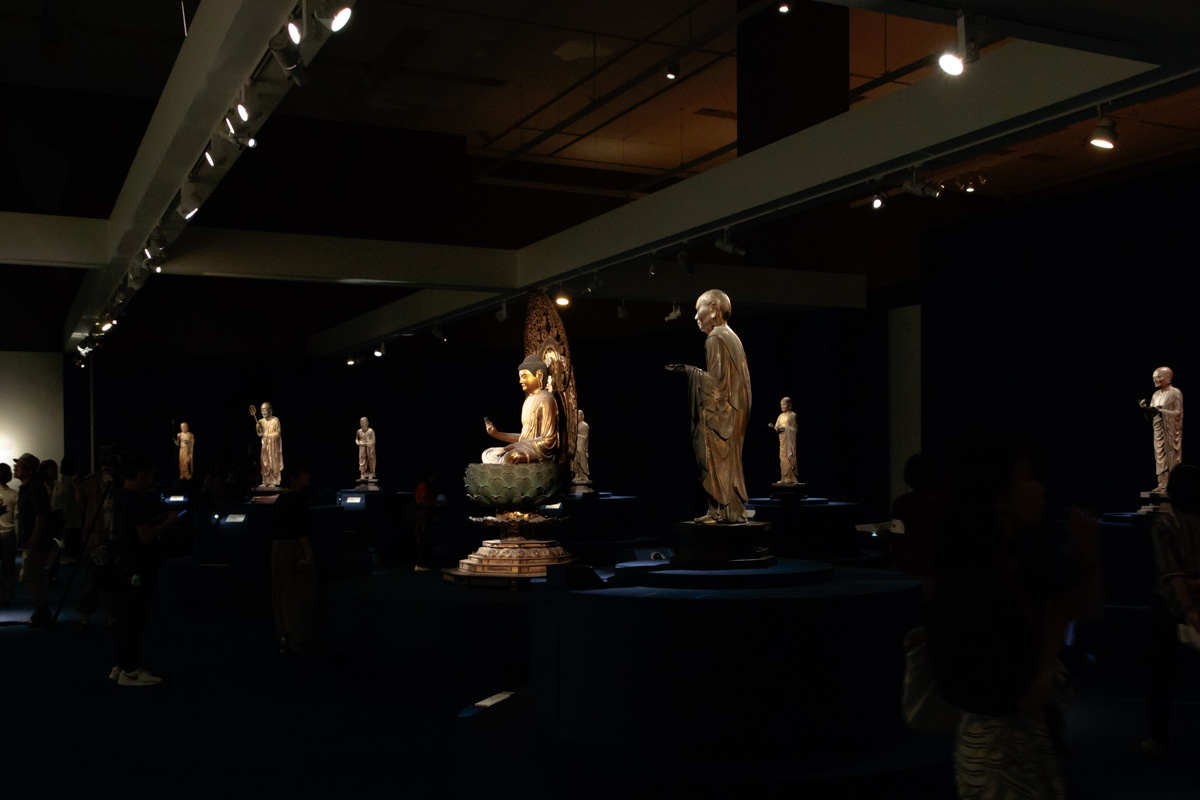
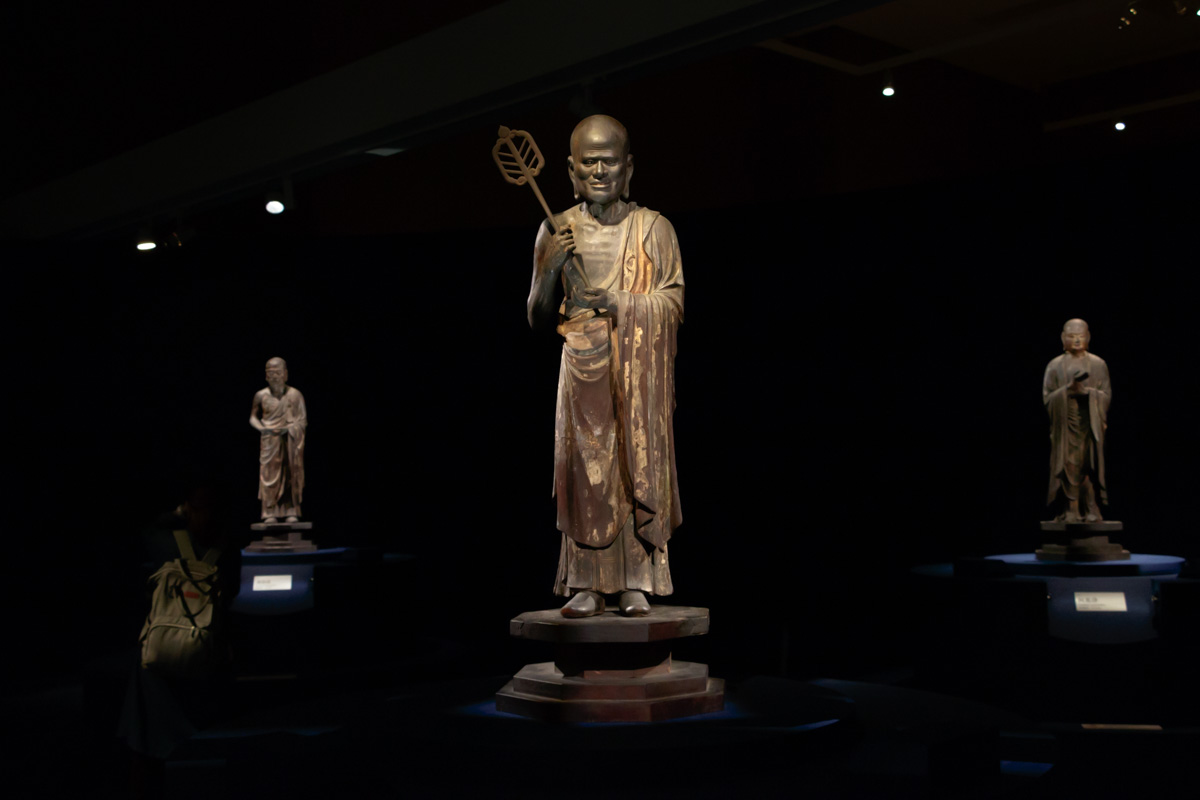
Following Creation of a Sacred Place —The Flourishing of Belief in Sakyamuni Buddha , The principal image; Seated Shaka Nyorai (Sakyamuni Buddha); and Ten major disciples of Buddha, which are now set separately in the temple, are displayed in the same space. It is the first time that Seated Shaka Nyorai (Sakyamuni Buddha) and ten great disciple statues, which are open to the public several times a year, are released outside the temple.
In the first half of the thirteenth century when Daiho’onji was built, the revelations of "the last law" (era when enlightenment ceased) were felt strongly due to repeated war. Giku Shonin tried to create a place to save people living the world of the last law by building a Buddha who always lives in this world and tells people how to preach.

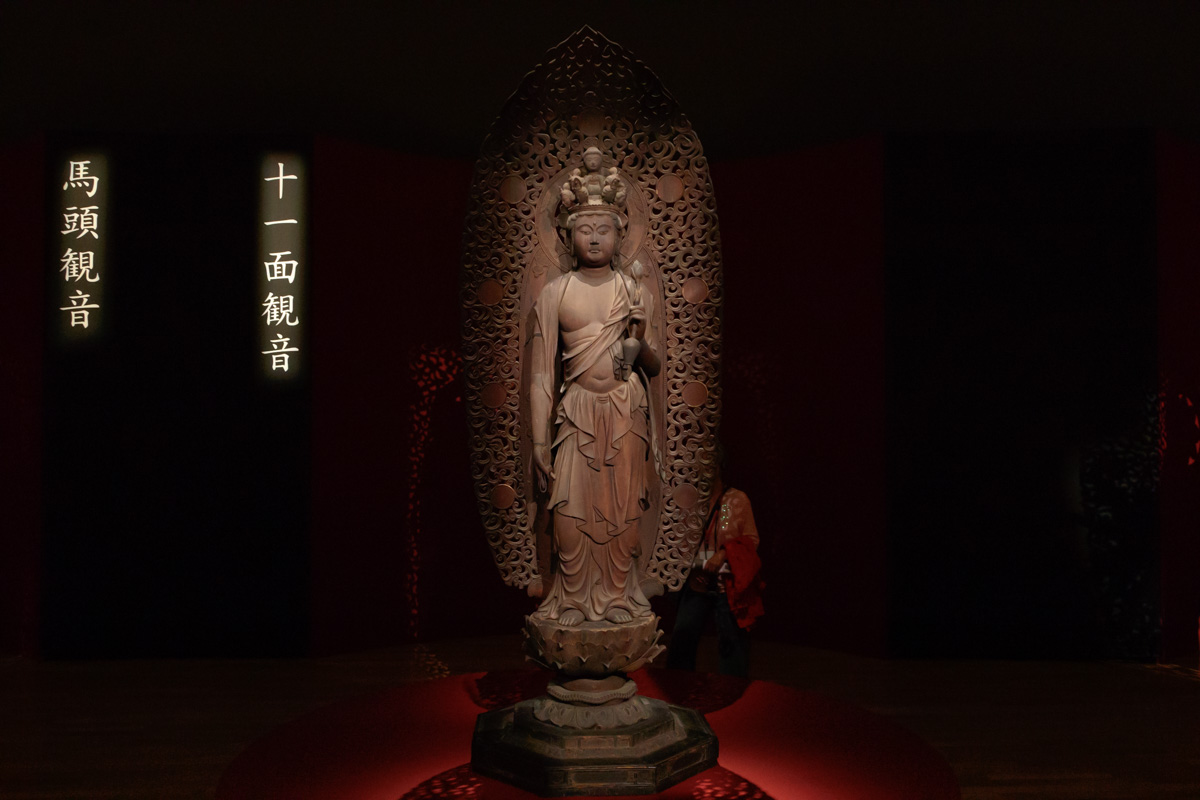
The center of the third chapter Roku Kannon Bosatsu (Six manifestations of Avalokitesvara) and Higo Jokei
is the Roku Kannon Bosatsu (Six manifestations of Avalokitesvara); made by Higo Jokei. The appearance of six-sounding lined with dark, burning crimson backgrounds is a spectacular one. Roku Kannon is a Buddha who rescues people from the Roku-do(six way) such as hell roads and hungry roads.
The vivid real existence that this statue has makes us feel the desperate idea and wish that people requested from Buddha in the world of the last law.
Exhibition work introduction
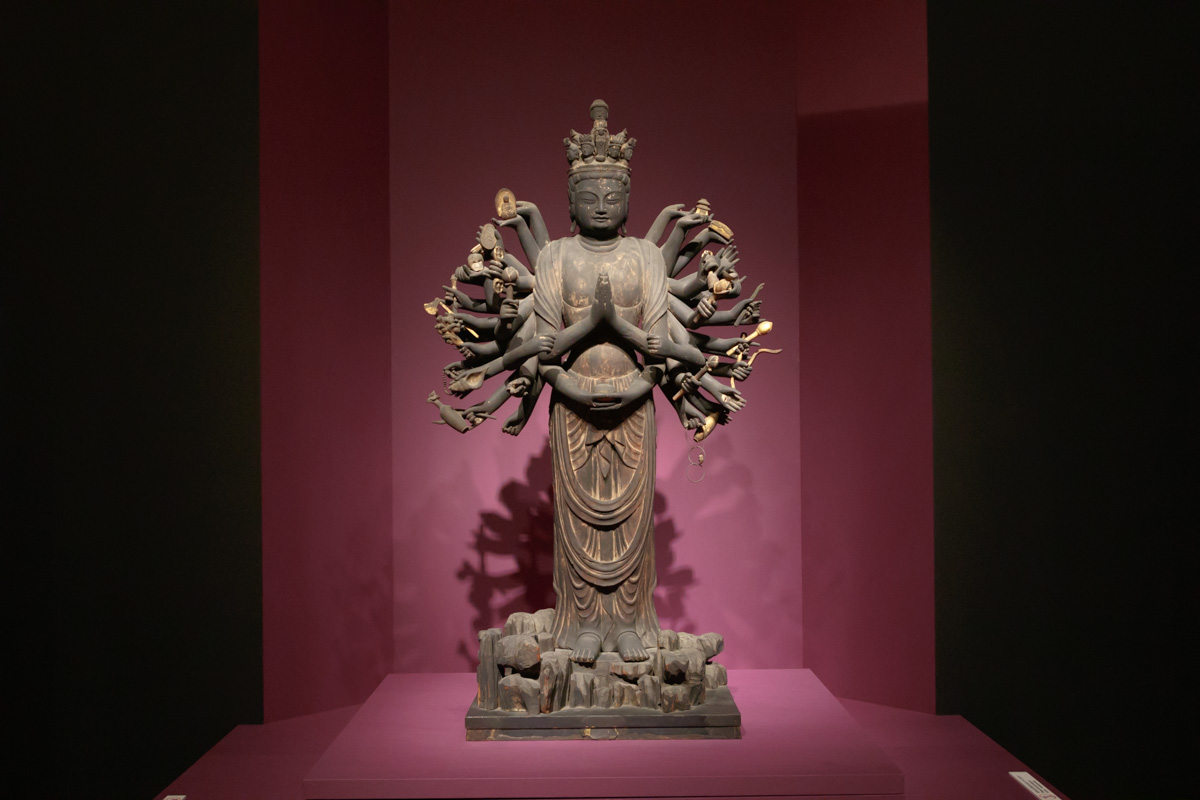
Daiho’onji is in the center of Kyoto but escaped from the war. To that end, many cultural properties that were contained in the surrounding old temples were gathered in Daiho’onji. Among them, this is a masterpiece of the Heian period "Senju Kannon Bodhisattva Statue". Representation of clothing called transverse wave clothing under the knee was prevalent in the early Heian period, which also shows that this work is before the establishment of Daiho’onji.
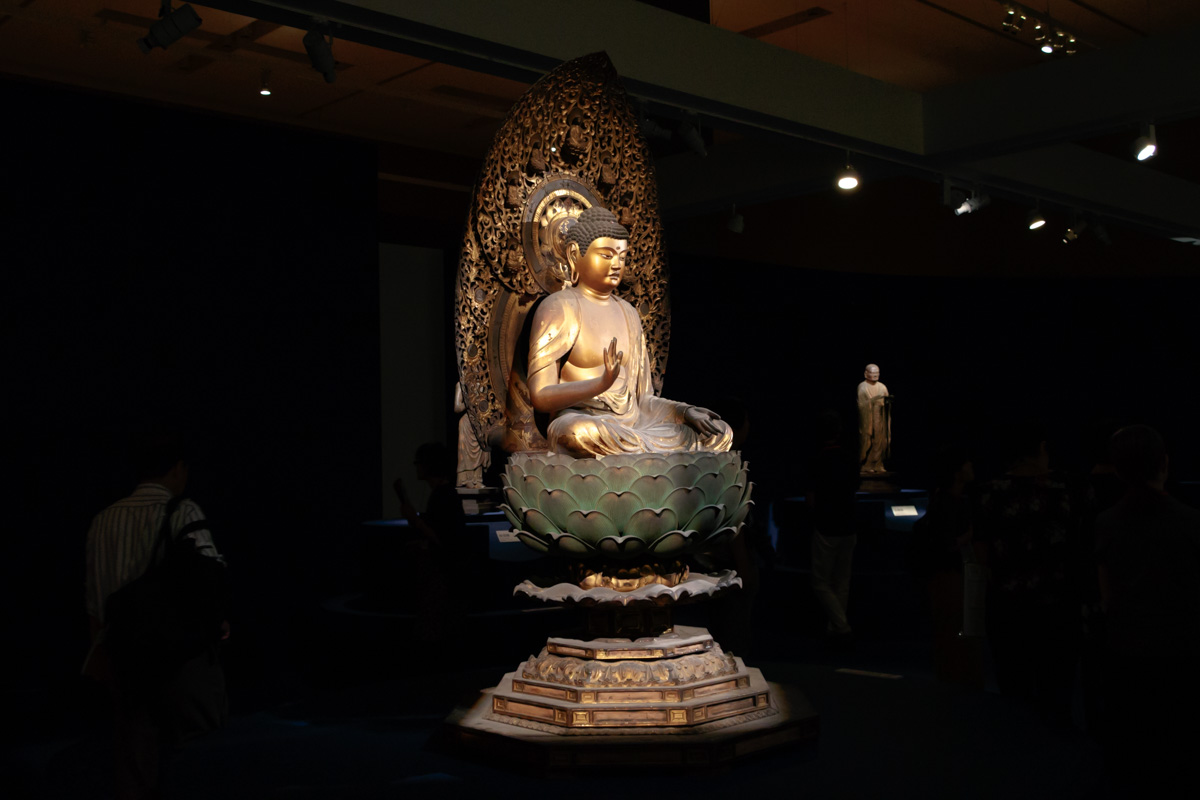
Seated Shaka Nyorai (Sakyamuni Buddha) is the secret Buddha of the Daiho’onji. The image height is 89.3 centimeters (about 3 scale), below the back seen the signature “Hogan Gyokai”, and I know that this work was made when the Gyokai was in the priesthood named “Hogan”.
The appearance likeness appears in the cheek flushing sideways, the eyed tail rising crisply, etc. In its powerful expression, I feel that I started exploring my style after the death of his master, Kaiun.
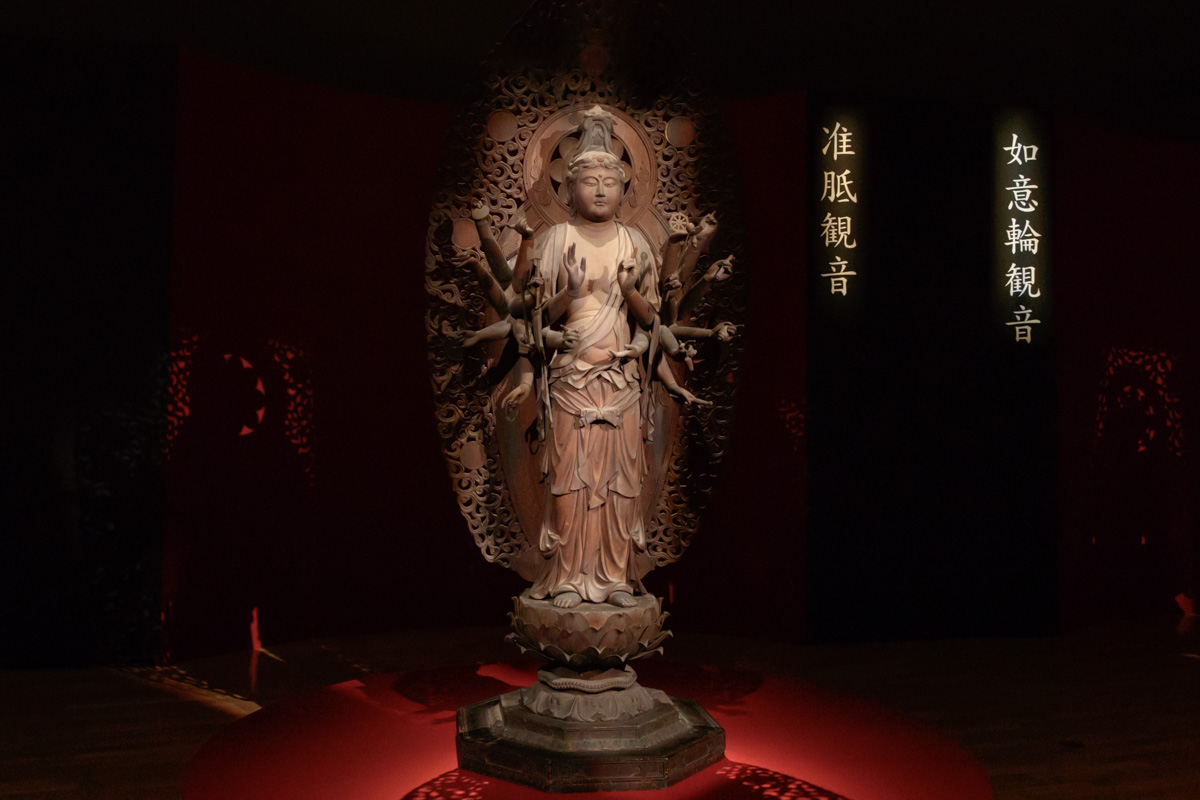
In the Roku Kannon Bosatsu, there are relatively few examples Jundei Kannon. It is a statue of a woman embodying the heart of mercy. It was revealed that the signature of “Higo Bettou Jyokei” was found in the statue, and it is a masterpiece of Jyokei, a skillful a sculptor of Buddhist images of the next generation. In addition, Roku Kannon Bosatsu are made of Kaya (one kinds of the conifer), this is because he is conscious of the “Danzo”; originally made of sandalwood.
I am amazed by the expression of very detailed details, such as the soft texture of the tied hair and the depiction of the clothes that scratch the air. Please come to the venue and enjoy the sculpture!
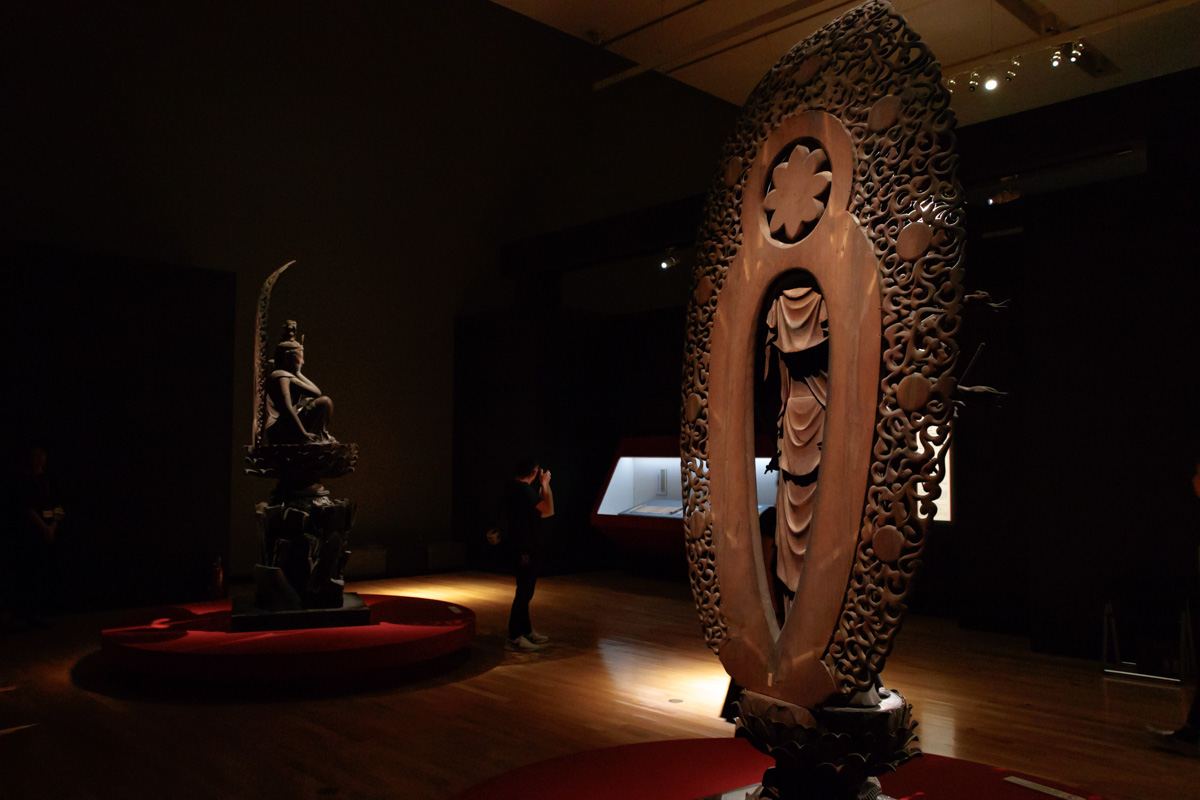
It is also a big feature that the backlight and the pedestal are left as they are at the beginning of the image. Especially light hunting (one that embodies the light emitted by Buddha) is fragile because it is brittle, and it is very rare that things at the beginning of the image are completely left.
Also, Roku Kannon Bosatsu are displayed with a backlight till until October 28 (Sunday), from October 30 (Tue) of the late period, the backlight would be removed, and you can appreciate its appearance as close as possible. It is an opportunity to enjoy the charm of Kannon from an angle different from usual, such as gently curved back and patterns of garment of elegant back.
Outline of the exhibition
| Exhibition name | The Buddhist Sculptures of Daiho’onji, Kyoto: Masterpieces by Kaikei and Jokei |
| Term | October 2 (Tue) – December 9 (Sun) in 2018 |
| Venue | Tokyo National Museum (Ueno Park 13-9, Taito-ku) Heiseikan Special 3rd and 4th rooms |
| Opening hours | 9: 30 ~ 17: 00 ※ Friday · Saturday, October 31 (Wednesday), November 1 (Thu) until 21:00 ※ Admission until 30 minutes before closing |
| closed day | Monday ※However, October 8 (Monday · congratulation) is open, closed on October 9 (Tue) closed |
| Admission fee | General day 1400 yen group 1200 yen College Student Day 1000 yen Group 800 yen High school student day 800 yen group 600 yen ※ Free from junior high school students ※Groups of 20 or more ※ Persons with disabilities and their carers are free (Presentation of handicapped persons with disabilities when entering) |
TEL | 03-5777-8600 |
| Exhibition official website | https://artexhibition.jp/kaikei-jokei2018/outline-en/ |
Article provision: Kokosil Ueno https://home.ueno.kokosil.net/en/
View other reports: https://www.culture.city.taito.lg.jp/en/reports
